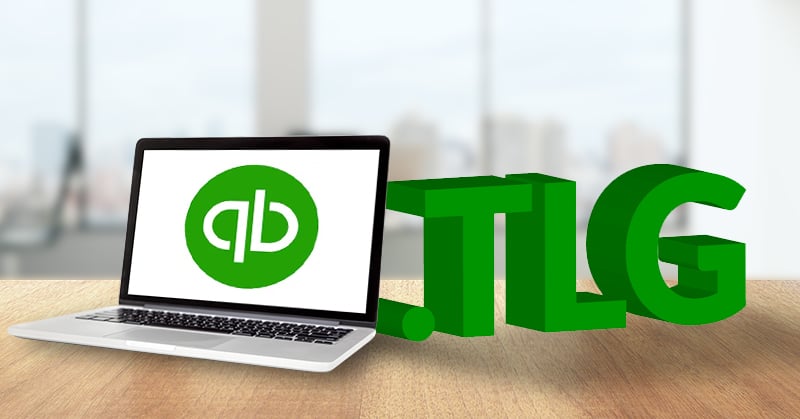I’ve come across many accountants and bookkeepers who are QuickBooks Desktop experts but they have never heard of the QuickBooks TLG file or truly understand its importance. This is understandable as it’s not something you actually touch in QuickBooks, it plays a supporting role to your QuickBooks company file and lives adjacent to each of your QuickBooks desktop files.
What does the QuickBooks TLG File Contain?
The QuickBooks TLG acronym actually stands for Transaction Log and tracks all changes to your company file since your last backup. Every time you open your company file in a new location, QuickBooks will write your changes to an existing TLG file or create a new one if one does not exist. The QuickBooks TLG file is intended as a recovery file in the event of a corruption to your company file.
What’s the Big Deal with QuickBooks TLG Files?
For the most part, your QuickBooks TLG file runs behind the scenes without you even knowing. It is constantly logging your QuickBooks changes to ensure recoverability. This results in a file that can easily grow well over the size of the QuickBooks Company file. The largest TLG file I’ve personally seen is 20 GB large which takes up a significant amount of hard drive space and working memory as QuickBooks writes data into the TLG file. With the high memory demands the TLG file places on QuickBooks, an out-of-control TLG file can result in errors, crashes and even corruption.
Can You Delete the QuickBooks TLG File?
If you notice your QuickBooks TLG file is rather large, your first thought might be just to delete the file. This of course will help save space on your hard drive and help QuickBooks run smoother, right? Although true, it’s highly recommended that you don’t delete the TLG file. QuickBooks will simply create a new TLG file the next time you open your company file in a new location. Deleting the TLG file would also result in the permanent loss of data if any of your main files become corrupted.
How Can You Reduce the Size of Your QuickBooks TLG File?
Since deleting your QuickBooks TLG file is far from an ideal solution, there is still a simple way to reduce the size and memory demands of your QuickBooks TLG file.
The easiest way to better maintain your QuickBooks TLG file is to regularly create a local backup routine with complete verification from within QuickBooks. When you create a local backup with complete verification, QuickBooks understands that the TLG file is no longer necessary since any corrupted files can be restored from the freshly created backup. This should reduce the size of your existing TLG file. So, to keep the TLG file manageable, make sure you stick to a schedule where you’re regularly running backups with complete verification.
What Happens if the Backup with Complete Verification Does Not Work?
Depending on the size of your current TLG file, QuickBooks may not be capable of running the backup with complete verification due to the current TLG file size. If this is the case, we always recommend you contact your local ProAdvisor or QuickBooks expert before you start taking matters into your own hands. Most likely if your TLG file size has grown exceptionally large, the experts will first move or rename the current TLG file prior to running the backup routine with complete verification. Most experts will change your TLG file name to “filename.TLG.DATED” and this should allow you to run the backup with complete verification. Afterward, you can delete the TLG file you renamed.
Key QuickBooks TLG Takeaways
Even though there’s no day-to-day interaction with the TLG file, you should be aware of its importance in relation to your QuickBooks company file. In summary, always remember:
- The QuickBooks TLG file should be just as important as the Company file. You’ll never know when you’ll need to recover lost data.
- The QuickBooks TLG file will always be adjacent to your QuickBooks file. If you have to move your QuickBooks file, the corresponding TLG file should always be moved with it.
- Create a consistent backup schedule with complete verification to manage the TLG file size and QuickBooks performance.
- When in doubt, always contact Intuit or a QuickBooks ProAdvisor who is well versed with the TLG functions.
- Consider a service which not only syncs your QuickBooks Desktop file with remote users but also syncs your TLG file as well.
.png?width=150&height=63&name=TWRlogo-regmark_blueblack%20(1).png)
.png)









Do you have questions about this article? Email us and let us know > info@woodard.com
Comments: